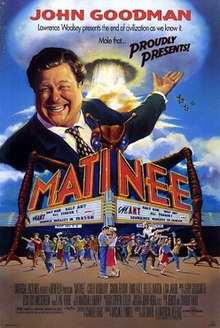
Bride of the Monster is a 1955 American independent science fiction horror film, co-written, produced and directed by Edward D. Wood Jr., and starring Bela Lugosi and Tor Johnson with a supporting cast featuring Tony McCoy and Loretta King.

Kaiju is a Japanese term that is commonly associated with media involving giant monsters. A subgenre of science fiction, it was created by Eiji Tsuburaya and Ishirō Honda. The term can also refer to the giant monsters themselves, which are usually depicted attacking major cities and battling either the military or other monsters.
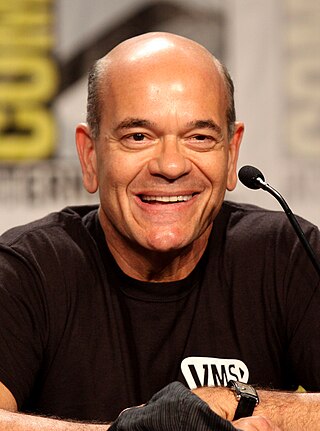
Robert Alphonse Picardo is an American actor. He is best known for playing the Cowboy in Innerspace, Coach Cutlip on The Wonder Years, Captain Dick Richard on the ABC series China Beach, the Doctor on Star Trek: Voyager and Richard Woolsey in the Stargate franchise. He is a frequent collaborator of Joe Dante and is a member of The Planetary Society's Board of Directors.
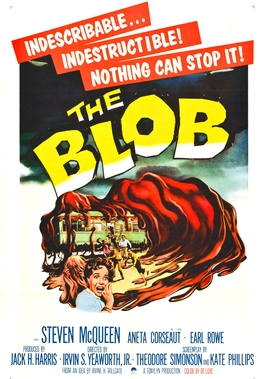
The Blob is a 1958 American independent science fiction horror film directed by Irvin Yeaworth and written by Kay Linaker and Theodore Simonson. It stars Steve McQueen and Aneta Corsaut and co-stars Earl Rowe and Olin Howland. It was distributed by Paramount Pictures as a double feature with I Married a Monster from Outer Space.
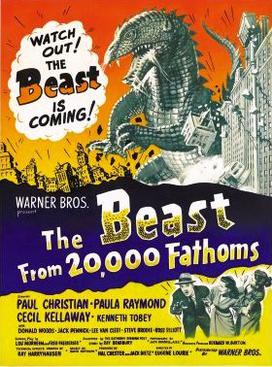
The Beast from 20,000 Fathoms is a 1953 American science fiction action horror film directed by Eugène Lourié, with special effects by Ray Harryhausen. The film stars Paul Christian, Paula Raymond, Cecil Kellaway, and Kenneth Tobey. The screenplay is based on Ray Bradbury's 1951 short story "The Fog Horn", specifically the scene where a lighthouse is destroyed by the title character. The film is about the Rhedosaurus, a dinosaur that is released from its frozen hibernating state by an atomic bomb test in the Arctic Circle and begins to wreak a path of destruction as it travels southward, eventually arriving at its ancient spawning grounds, which includes New York City.
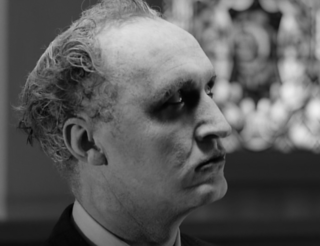
Harold Arnold "Herk" Harvey was an American film director, screenwriter, actor and film producer, perhaps best known for his 1962 horror film Carnival of Souls.

Gremlins 2: The New Batch is a 1990 American comedy horror film, and the sequel to the 1984 film Gremlins. It was directed by Joe Dante and written by Charles S. Haas, with creature designs by Rick Baker. Zach Galligan, Phoebe Cates, Dick Miller, Jackie Joseph, and Keye Luke reprise their roles from the first film; Belinda Balaski also returns, this time playing a different character. New cast members include John Glover, Robert Prosky, Haviland Morris, Robert Picardo, and Christopher Lee; additionally, the film features Tony Randall providing the voice for one of the gremlins. The story continues the adventures of the creature Gizmo, who spawns numerous small monsters when wet. In the first film, Gizmo's offspring rampaged through a small fictional town. In Gremlins 2: The New Batch, Gizmo multiplies within a skyscraper in New York City after his owner dies. The new creatures thus pose a serious threat to the city should they be able to leave the building, and the story revolves around the human characters' efforts to prevent this disaster.
Larry Buchanan, born Marcus Larry Seale Jr., was a film director, producer and writer, who proclaimed himself a "schlockmeister". Many of his extremely low-budget films have landed on "worst movie" lists or in the public domain, but all at least broke even and many made a profit. Most of his films were made for television and were never shown theatrically.

Joseph James Dante Jr. is an American filmmaker, producer, editor and actor. His films—notably Gremlins (1984) alongside its sequel, Gremlins 2: The New Batch (1990)—often mix the 1950s-style B movie genre with 1960s radicalism and cartoon comedy.

The Howling is a 1981 American horror film directed and edited by Joe Dante. Written by John Sayles and Terence H. Winkless, based on the novel of the same name by Gary Brandner, the film follows a news anchor who, following a traumatic encounter with a serial killer, visits a resort secretly inhabited by werewolves. The cast includes Dee Wallace, Patrick Macnee, Dennis Dugan, Christopher Stone, Belinda Balaski, Kevin McCarthy, John Carradine, Slim Pickens, and Elisabeth Brooks.

The Relic is a 1997 American monster-horror film directed by Peter Hyams and based on the best-selling 1995 novel Relic by Douglas Preston and Lincoln Child. The film stars Penelope Ann Miller, Tom Sizemore, Linda Hunt, and James Whitmore. In the film, a detective and a biologist try to defeat a South American lizard-like monster which is on a killing spree in the Field Museum of Natural History in Chicago.

The Mummy's Curse is a 1944 American horror film directed by Leslie Goodwins. Produced by Universal Pictures, it is the fifth entry in Universal's original Mummy franchise, serving as a sequel to The Mummy's Ghost (1944). It marks Lon Chaney Jr.'s final appearance as Kharis, an Egyptian mummy.

The Eye Creatures is a 1967 American made-for-television comedy horror science fiction film about an invasion by a flying saucer and its silent, shambling alien occupants.

Robert Rae Cornthwaite was an American film and television character actor.

The Giant Gila Monster is an American 1959 science fiction horror film directed by Ray Kellogg and produced by Ken Curtis. A famous B-movie of the era, the film stars Don Sullivan, a veteran of several low budget monster and zombie films, and Lisa Simone, the French contestant for the 1957 Miss Universe, as well as comedic actor Shug Fisher and KLIF disc jockey Ken Knox. The effects included a live Mexican beaded lizard filmed on a scaled-down model landscape.

A monster movie, monster film, creature feature or giant monster film is a film that focuses on one or more characters struggling to survive attacks by one or more antagonistic monsters, often abnormally large ones. The film may also fall under the horror, comedy, fantasy, or science fiction genres. Monster movies originated with adaptations of horror folklore and literature.

Creature Features is a generic title for a genre of horror TV format shows broadcast on local American television stations throughout the 1960s, 1970s, and 1980s. The movies broadcast on these shows were generally classic and cult horror movies of the 1930s to 1950s, the horror and science-fiction films of the 1950s, British horror films of the 1960s, and the Japanese kaiju "giant monster" movies of the 1950s to 1970s.

The Giant Claw is a 1957 American monster film from Columbia Pictures, produced by Sam Katzman, directed by Fred F. Sears, that stars Jeff Morrow and Mara Corday. Both Sears and Katzman were well known as low-budget B film genre filmmakers. The film was released as a double feature with The Night the World Exploded.
Alex Gordon was a British film producer and screenwriter.
Monsterwolf is a 2010 Syfy original television film directed by Todor Chapkanov and stars Leonor Varela, Robert Picardo, and Marc Macaulay. The film was part of Syfy's 31 Days of Halloween 2010 and premiered on Syfy October 9, 2010.
